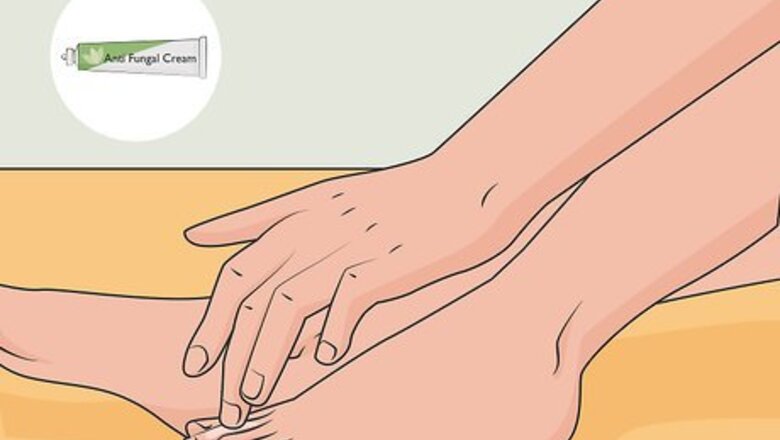
views
Effective Medical Treatments
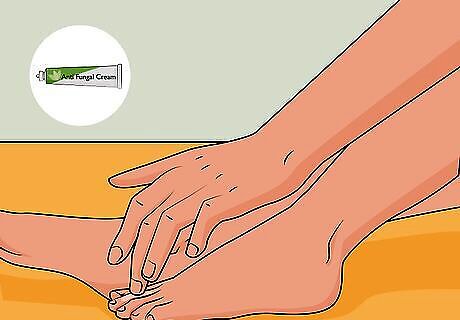
Apply an over-the-counter antifungal cream 1-2 times daily. The most effective at-home treatment for foot fungus is an over-the-counter antifungal cream. Go to the pharmacy and look for creams containing miconazole, clotrimazole, terbinafine, or tolnaftate, which are usually the most effective. Rub the cream on the rash and surrounding skin 1-2 times per day, according to the product instructions. It’s best to apply the cream right after washing your feet so it can stay on for as long as possible. You could also use antifungal sprays or powders, but they usually don’t cover the rash as well as creams and ointments.

Trim your nails before applying the cream for nail fungus. Regular OTC antifungal cream can also work for nail fungus, but it's more difficult for the cream to reach underneath your nails. If you have nail fungus, trimming your nails can help relieve pain and help the cream reach the rash better. Wet your nails to soften them and trim them back with a nail clipper. Then apply the cream normally. Creams and sprays are overall less effective for nail fungus because the cream can’t reach underneath the nail. You’ll probably need oral medication for nail infections. Cover the skin around your nail as well so the rash doesn’t spread further. Clean the nail clipper when you’re done and don’t share it with anyone else. This could spread the rash.
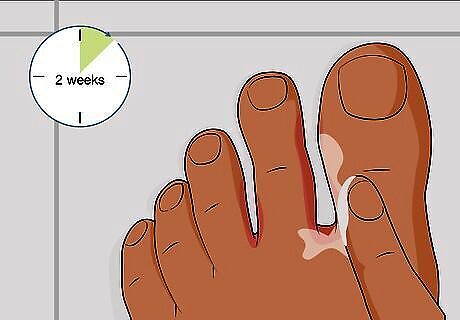
Continue applying the cream for 2 weeks after the rash disappears. OTC creams usually clear the rash within 1-2 weeks, but don’t stop applying the cream when the rash improves. Continue applying the cream daily to make sure all the fungus is dead. If not, the rash could come back. Confirm these directions on the product box. Don’t continue applying the cream if the product says not to.
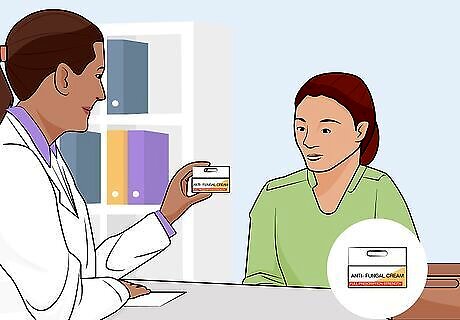
Visit a podiatrist for prescription cream if the rash doesn’t go away. If you’ve been using OTC treatments for 2 weeks and the rash hasn’t improved, then don't worry. You probably just need a stronger medication. Make an appointment with a podiatrist for an exam. They will probably prescribe a prescription-strength cream. Apply the cream exactly as the doctor tells you to so the rash clears up. The instructions for prescription-strength creams are usually very similar to OTC ones. You’ll probably have to apply it to the rash and surrounding area 1-2 times per day for 1-2 weeks.
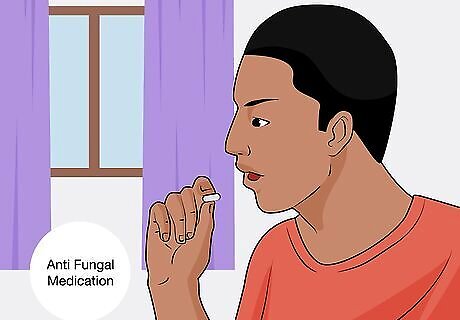
Take oral antifungal medication if the rash doesn’t respond to cream. If the fungus doesn’t respond to topical treatments, or if it’s under your nail, you might need an oral medication instead of cream. You usually have to take these medications for 6-12 weeks to make sure the infection is all cleared. Follow your doctor’s instructions for taking the medication correctly. Some oral antifungal medications are terbinafine (Lamisil) and itraconazole (Sporanox). The type that your doctor prescribes depends on the type of infection you have. Oral antifungals could cause liver problems, so your doctor may order periodic blood tests to make sure the levels in your system are correct. They may not recommend oral medication if you have any type of liver disease or damage.
Unverified Home Remedies
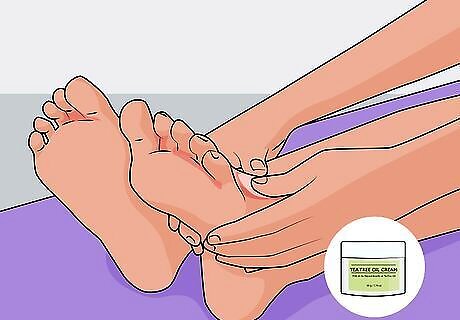
Rub 50% tea tree oil cream onto the rash. Tea tree oil is an essential oil with antibacterial and antifungal properties. It shows some success in treating athlete’s foot. Get a cream containing a 50% concentration of tea tree oil and rub it onto your rash twice a day. Continue this treatment for 2-4 weeks until the rash clears up. If you get undiluted tea tree oil, dilute to a 50% concentration. Use a carrier oil like jojoba or olive. Then mix 1/2 tsp (2.5 ml) of carrier oil with 1/2 tsp (2.5 ml) of the tree oil for a 50% mixture. Weaker concentrations of tea tree oil might help reduce the rash, but generally won’t kill the fungus completely.
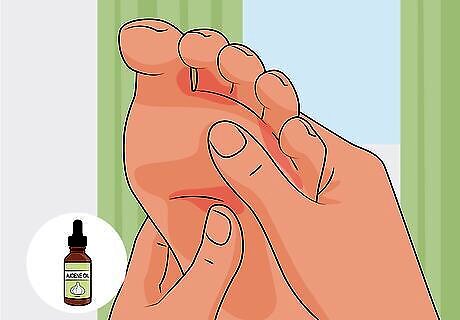
Try ajoene extract to kill the fungus. Ajoene is a compound in garlic that small studies show can kill the athlete’s foot fungus. Get a 1% concentration of ajoene oil or gel. Rub this onto the rash twice a day for 1-2 weeks to see if this works for you. You might also be able to use raw garlic as an antifungal treatment. However, it’s uncertain if raw garlic works specifically against foot fungus.

Soak your feet in vinegar to kill bacteria and odor. This is another popular home remedy for athlete’s foot. It hasn’t been widely studied, but some people find it helpful. Mix 2 parts of warm water with 1 part of white or apple cider vinegar. Then soak your feet for 15-20 minutes. This might kill the fungus causing your rash. Only do a vinegar soak once a week to avoid irritating your skin. You’ll probably have to use other treatments during the rest of the week. Vinegar is acidic and might cause some burning or irritation if you have cuts on your feet.
Preventing the Fungus from Spreading
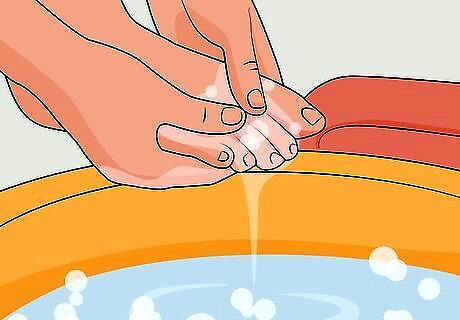
Wash your feet with soap and water twice a day. Regular washing can prevent the fungus from spreading and help the rash heal faster. Wash your feet with soap and warm water. Make sure you get in between your toes, because fungus often starts there. Then rinse all the soap off. Repeat this twice per day until the rash clears. Remember to wash your hands after cleaning your feet. Otherwise, you could spread the infection. This is also an important general practice to prevent foot fungus from starting in the first place, so wash your feet every time you bathe.

Dry your feet whenever they’re wet. Sweaty feet are the perfect environment for fungus to grow in. Whenever your feet get wet or sweaty, use a towel and dry them off. Remember to get in between your toes, which is where fungus usually hides. To dry your feet further, you could rub some talcum powder onto your feet. Only use the towel once and then wash it. Otherwise, you could spread the fungus.
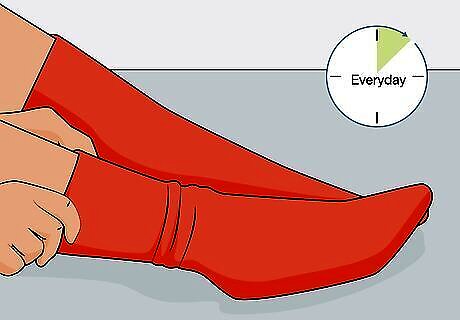
Change your socks and shoes every day. Fungus can live in your socks and shoes, so don’t wear the same ones every day. Change your socks twice a day, especially if your feet get sweaty. Also, try not to wear the same pair of shoes more than 1 day in a row so they dry out before you wear them again. You could also sprinkle talcum or antifungal powder into your shoes to dry them out and kill any leftover fungus.
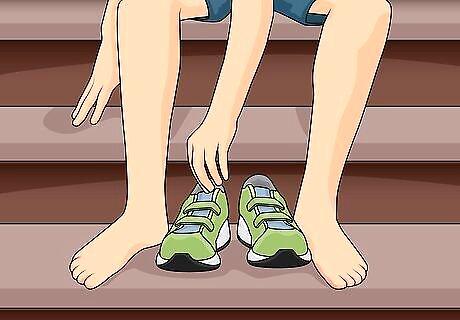
Take off your shoes when you’re at home. Keeping your shoes on provides a good environment for the fungus to grow and spread. When you get home, take your shoes off so your feet can dry and cool off. If you take your socks off, be sure to wear a pair of sandals instead. You could spread the fungus if you walk around barefoot.
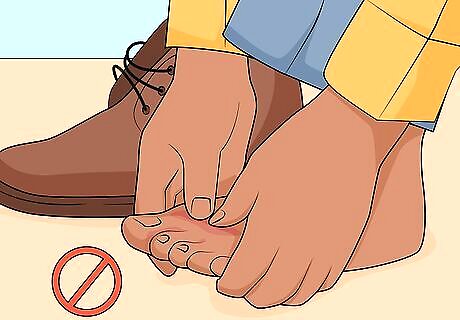
Avoid touching the rash. Foot fungus is contagious and you could spread it around if you touch the rash. The rash might be annoying any itchy, but do your best to resist touching it. This prevents it from spreading and also helps the rash heal faster. If you do accidentally touch the rash, wash your hands right away so you don’t spread it.
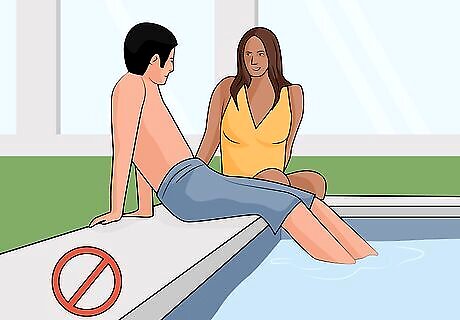
Stay away from public pools and showers until the rash clears. These are some of the most common places that foot fungus spreads. Be considerate of other patrons and avoid these areas until your rash clears up. If you do have to go to a place like this, don’t walk around barefoot. Always wear sandals or some other footwear so you don’t spread the fungus.
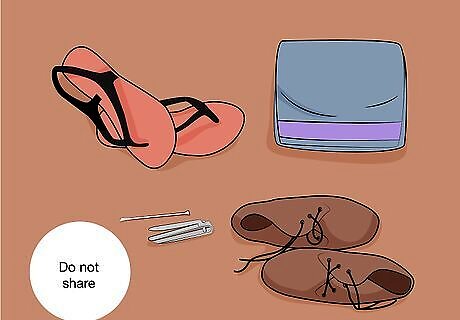
Use your own towels and personal items. Sharing towels, nail clippers, shoes, and other personal items can definitely spread the rash to other people. Don’t share any personal items with others in your home to keep the rash contained. Using your own personal items is generally a good practice, even if you don’t have athlete’s foot. It prevents people from accidentally spreading fungus or bacteria to each other.




















Comments
0 comment